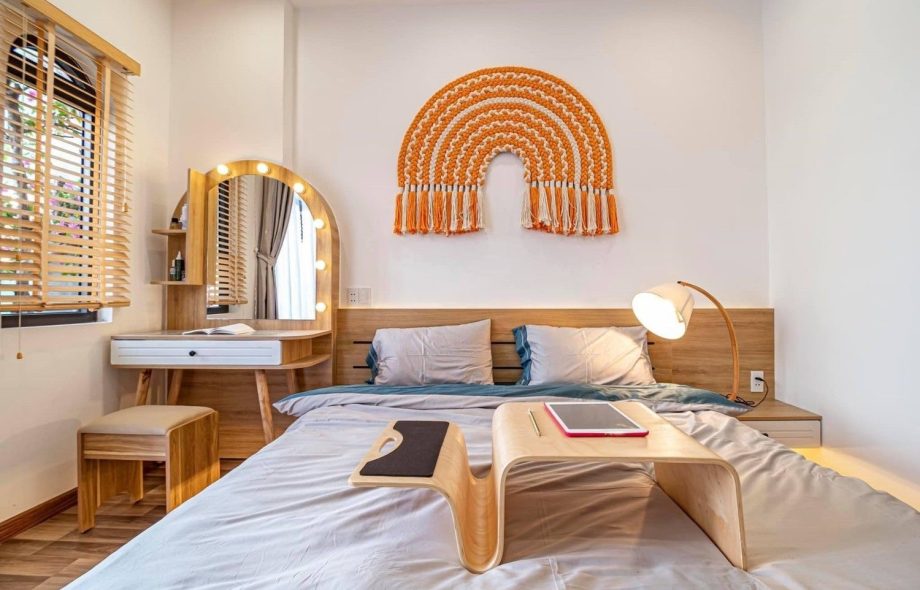Woodwork is more than just sawing, sanding, and assembling—it’s an intricate craft that blends precision with artistic expression. While many see carpentry as a practical trade, its roots are deeply creative. From ornate architraves to custom interior fittings, carpenters play a crucial role in shaping the way homes and buildings come to life.
Today’s carpenters don’t just build—they design, innovate, and elevate every corner of a space. Their influence is especially notable in bespoke interiors, where handcrafted solutions often make the difference between standard and standout.
In vibrant construction and renovation scenes—such as the growing demand for carpenters in Cardiff—this creative ability is more essential than ever. Let’s explore how carpenters contribute artistically to the world of interiors and architecture, and how their work continues to evolve with both time and taste.
The Artistic Nature of Carpentry
At its core, carpentry is a form of design language. Much like an artist wields a brush, a carpenter uses tools to translate a client’s ideas into form. But unlike static artworks, carpentry is functional art—it must not only look beautiful but serve a purpose too.
This balance between form and function drives carpenters to take on the role of designer as much as builder. When a homeowner envisions a statement staircase or a reading nook framed in timber, the carpenter is the one who figures out how to bring it to life. It’s not just about measurements and cuts—it’s about capturing the personality and atmosphere that the client imagines.
Creative carpentry thrives particularly in custom work. Built-in shelves tailored to specific book collections, loft conversions with wooden beams that echo rustic charm, or reception desks crafted to represent a brand—all of these require more than technical skill. They need creative interpretation, proportion judgement, and aesthetic awareness. Carpenters help define a space’s tone, setting, and impact through their understanding of design principles.

Material Mastery and Design Precision
A significant part of carpentry artistry lies in the material choices. Wood is an incredibly versatile medium, but each species comes with its own personality. Oak offers strength and grain character, pine provides softness and affordability, while walnut brings richness and depth. Understanding these nuances is fundamental to achieving a desired visual effect.
For example, a minimalist home may call for clean, pale timber, while a more traditional interior may favour richly stained hardwoods. The carpenter’s role here is not only to source and work with these materials but also to understand how they respond to tools, climate, finishes, and ageing.
Precision is another aspect where carpentry shifts into an art form. Symmetry in panel designs, perfect mitre joints on architraves, or aligned grain flow across cupboard doors—all demand a high level of accuracy and a trained eye. The result? Woodwork that not only fits but complements and enhances the overall aesthetic of the space.
Bringing Character to Interior Spaces
One of the most visible ways carpenters express creativity is through their influence on interior design. From sculptural staircases to elegant wall panelling, carpenters are pivotal in shaping atmosphere and character within a space. Interior woodwork introduces texture, warmth, and dimension—elements that make a building feel lived-in and personal.
Among the standout features are bespoke doors in Cardiff, which often become central to both design and function. A thoughtfully crafted door is more than just an entryway—it’s a statement. Whether it’s a reclaimed timber barn door sliding on industrial rails or a sleek flush door with hidden handles, carpenters tailor each piece to fit the context of its surroundings.
In living rooms, timber-framed shelving, media walls, and window seats blend function with form. In kitchens, custom cabinetry combines storage needs with visual appeal. Even small details like skirting boards or cornices benefit from a carpenter’s creative touch. Rather than opting for off-the-shelf options, property owners now prefer unique pieces that reflect their individual style.
Tools and Techniques Behind the Craft
The creative outcomes seen in carpentry are supported by a toolbox full of traditional and modern instruments. From hand planes and chisels to routers and laser cutters, carpenters rely on a wide array of tools to execute complex designs with finesse.
But beyond the tools lies the mastery of technique. Joinery—such as dovetail, mortise and tenon, or finger joints—not only ensures strength but also contributes to the aesthetic quality of a piece. Decorative inlays, scrollwork, or hand carvings elevate functional items into visual highlights.
Modern techniques, including CNC machining and digital patterning, have expanded the boundaries of what’s possible. Yet even with these advancements, many carpenters still favour the tactile feedback and creative control that comes with hand tools.
Collaboration and Vision Realisation
No creative carpentry project happens in isolation. At the heart of every successful piece of bespoke woodwork is a close collaboration between the carpenter and their client. This process often starts with a conversation—understanding needs, preferences, and the story behind the space.
From initial sketches or mood boards, carpenters work to refine ideas into viable constructions. They provide valuable input on proportions, scale, and material compatibility. This consultative role ensures that what’s being created is not only beautiful but also feasible and safe.
The real magic happens in the translation. It’s one thing for a client to say they want a “statement wall unit,” but it’s the carpenter who visualises what that actually looks like—selecting shapes, deciding on shelving layout, and integrating hidden compartments or lighting.
This creative partnership ensures the final product is aligned with the original vision while exceeding expectations in execution. The carpenter acts as both consultant and creator, guiding clients through a journey from concept to completion.

Carpentry’s Role in Sustainable and Custom Design
Sustainability has become a defining factor in modern construction and design. Here too, carpenters play an important role in promoting eco-conscious choices through material sourcing and waste management.
Timber, when responsibly sourced, is one of the most sustainable materials available. Many carpenters choose to work with FSC-certified wood, reclaimed timber, or fast-growing species that regenerate quickly. These choices reduce the environmental impact while offering clients peace of mind.
Additionally, custom carpentry is inherently less wasteful than mass production. Because each project is tailored to specific dimensions and needs, there’s less risk of surplus or offcuts. Carpenters also make efficient use of materials, repurposing leftover wood into smaller fittings or decorative elements.
By choosing to work with expert carpenters in Cardiff, clients can access these sustainable practices while enjoying high-quality results that reflect personal style and ethical standards.
Conclusion
Carpentry is far more than a practical service—it’s a creative discipline rooted in craftsmanship, vision, and precision. Whether shaping the flow of a room through custom shelving or enhancing entrances with beautifully made doors in Cardiff, carpenters leave a lasting impact on the spaces they touch.
Their unique ability to understand materials, translate design intent, and collaborate with clients transforms ideas into tangible, functional art.
For those seeking to enhance their interiors with bespoke woodwork, partnering with skilled carpenters in Cardiff is a step towards creative excellence. At AO Builders Cardiff, we recognise the importance of true craftsmanship and work alongside trusted professionals who bring vision to life—one carefully crafted piece at a time


 :
: